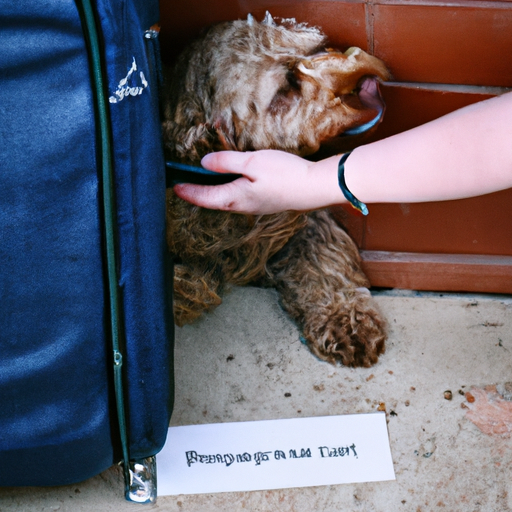If you are a dog owner, you know that there is no better feeling than coming home to a wagging tail. But what happens when your beloved pet doesn’t handle your absence well? Separation anxiety in dogs is a prevalent issue, often causing distress for both the pet and the owner. However, with thoughtful interventions, you can help your dog overcome this challenge. This article will provide comprehensive guidance on how to work on separation anxiety in dogs.
Table of Contents:
1. Understanding Separation Anxiety in Dogs
2. Symptoms of Separation Anxiety in Dogs
3. Causes of Separation Anxiety in Dogs
4. Strategies to Alleviate Separation Anxiety
5. Training and Professional Help
6. FAQs
Key Takeaways
– Separation anxiety is a common issue in dogs that can be mitigated with appropriate strategies.
– A calm and consistent approach is crucial in dealing with separation anxiety.
– In severe cases, professional help may be required.
Understanding Separation Anxiety in Dogs
Separation anxiety is a condition where a dog exhibits distress and behavior problems when separated from their owner. It’s an issue that can affect any breed and age group. As a caregiver, understanding the root of this condition is the first step towards resolution. The American Kennel Club provides an in-depth explanation of the disorder.
Symptoms of Separation Anxiety in Dogs
To effectively address separation anxiety, it’s crucial to recognize the signs. Watch for these common symptoms:
- Destructive behavior: This could include chewing furniture, digging holes, or tearing up items around the house.
- Excessive barking or howling: Dogs with separation anxiety often vocalize their distress when left alone.
- Pacing: Some dogs may pace in a fixed pattern when anxious.
- Accidents in the house: Even well-trained dogs may urinate or defecate inside when stressed.
For a comprehensive list of symptoms, check out this article that delves into dog behavior issues.
Causes of Separation Anxiety in Dogs
Experts believe that several factors contribute to separation anxiety in dogs. These include:
- Changes in routine
- Neglect or abandonment
- Lack of socialization
- Traumatic events
Understanding the causes can help identify effective solutions. For instance, a stable routine can provide comfort and security to dogs prone to anxiety.
Strategies to Alleviate Separation Anxiety
Working on separation anxiety requires patience and consistency. Here are some strategies you can implement:
- Gradual desensitization: Start by leaving your dog alone for short periods and gradually increase the duration. This can help your pet get used to your absence.
- Establish a calm departure and return: Avoid fussing over your dog when leaving or returning home. This way, your dog will learn that it’s not a big deal when you leave or come back.
- Provide mental stimulation: Engage your dog in interactive games or provide puzzle toys to keep their mind occupied. This article offers some excellent toy recommendations.
- Encourage independent play: Teach your dog to enjoy alone time. Start by encouraging independent play when you are home and gradually increase the distance between you.
In some cases, separation anxiety may require professional help. Consider seeking advice from a professional dog trainer or behaviorist. This article provides insights on when to seek professional help.
Training and Professional Help
When separation anxiety becomes severe, professional intervention may be necessary. Behavior modification training, such as counter-conditioning and desensitization, can be highly effective. In some cases, medication may also be recommended.
FAQs
Q1: Can separation anxiety in dogs be cured?
A: While there’s no quick fix for separation anxiety, with patience and proper strategies, most dogs can overcome their fear of being left alone.
Q2: Can exercise help with separation anxiety?
A: Yes, regular exercise can help reduce anxiety in dogs. Physical activity tires your pet and reduces excess energy, leading to a calmer state of mind.
Q3: Can puppies have separation anxiety?
A: Yes, puppies can also experience separation anxiety. Early intervention can help prevent the issue from escalating as the puppy grows.
Q4: Are certain breeds more prone to separation anxiety?
A: While any breed can develop separation anxiety, breeds known for their strong attachment to their owners, such as Labrador Retrievers and Border Collies, may be more prone to this condition.
Q5: When should I seek professional help?
A: If your dog’s separation anxiety is causing significant distress or destructive behavior, it may be time to seek professional help.
Separation anxiety in dogs can be a challenging issue to tackle. But with compassion, consistency, and a little help from professionals when needed, it’s a battle you can win. Remember, you’re not alone in this journey. Reach out to resources like One Top Dog for more advice and support.



